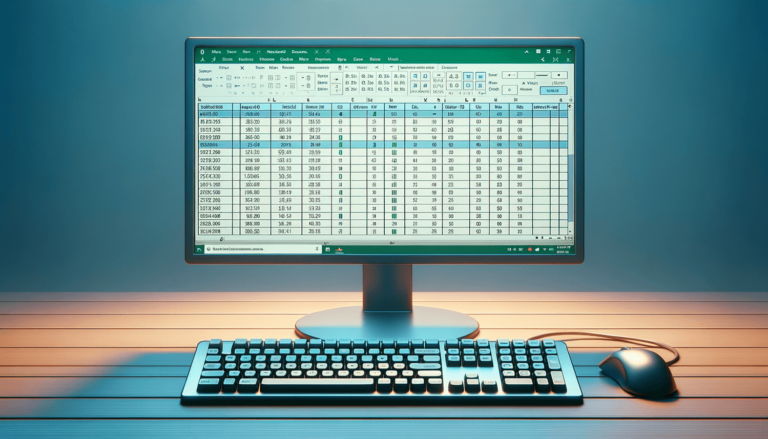

Are you new to Excel and wondering how to make 0 a dash in the spreadsheet? Look no further. This simple but essential task can be completed in just a few clicks. Whether you’re working on financial statements or simply organizing data, using the dash symbol can make your reports clearer and easier to read. In this article, we’ll walk you through the steps to change 0 to a dash in Excel, so you can present your data in a way that is easy to understand.
Before we begin, it’s important to note that changing 0 to a dash in Excel can be done in two ways: by formatting cells or by using conditional formatting.
This method involves selecting the cells you want to format and applying the Number Format. Here’s how:
This method involves using conditional formatting to change all 0s to dashes in a selected range of cells. Here’s how:
By using either of these two methods, you can easily change 0 to a dash in Excel. This can help enhance the readability of your reports and make it easier for readers to understand. We hope this tutorial has been helpful.
When working with financial reports or any other type of document that involves numbers, using dashes instead of zeroes can have a few advantages. For example, a dash can make it easier to spot missing data in a table. It can also help to avoid confusion when dealing with large amounts of data, where multiple zeroes in a row can be difficult to read.
Did you know that you can customize the dash symbol to fit your preferred style? Excel allows you to use different characters instead of the standard dash. For example, you can use a longer dash (—) or a shorter one (-). You can even use symbols like brackets, asterisks, and more.
To customize the dash symbol using Format Cells:
To customize the dash symbol using Conditional Formatting:
Changing 0 to a dash in Excel can be a simple but effective way to make your documents easier to read. Whether you use the standard dash or a customized one, this formatting trick can save you time and enhance the presentation of your work.
Here are a few frequently asked questions about changing 0 to a dash in Excel:
In Excel, dashes are used to indicate missing or incomplete data, while zeroes represent actual data values that happen to be zero. Using dashes can make it easier to spot and interpret missing data in a table or report.
You technically can do this, but it would replace any actual zeroes in your data as well. Additionally, other users who view your file may not be aware of the substitution and misunderstand the data.
Yes! There are many characters you can use instead of the dash, including asterisks, brackets, and other specialized symbols. Refer to Excel’s formatting guidelines for a complete list of available characters.
Yes, you can use the dash-and-double-dash convention to represent different types of missing data. For example, you could use a single dash for missing data and a double dash for data that is intentionally blank. Customize the format code according to your needs.
To remove the dash formatting from a cell and return it to a regular number format, select the cell and press “CTRL + 1” to open the Format Cells dialogue. Then, under Category, select the Number format that you want to use and click OK.
Explore the world of Microsoft PowerPoint with LearnPowerpoint.io, where we provide tailored tutorials and valuable tips to transform your presentation skills and clarify PowerPoint for enthusiasts and professionals alike.

Your ultimate guide to mastering Microsoft Word! Dive into our extensive collection of tutorials and tips designed to make Word simple and effective for users of all skill levels.

Boost your brand's online presence with Resultris Content Marketing Subscriptions. Enjoy high-quality, on-demand content marketing services to grow your business.
